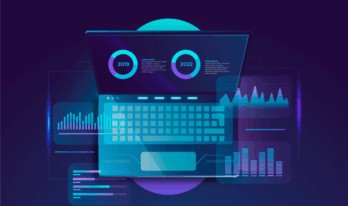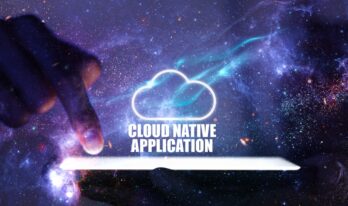Data is the new oil, and many industries have successfully unleashed its potential to gain business efficiencies and competitive advantage.
One tremendous example is the U.S. presidential election of 2016, where millions of user data were used to influence the voters.
E-commerce is agile and flexible. Organizations in this sector are continually looking for ways to retain customers and understand their real needs and wants.
The E-commerce industry is investing in modern technology to upgrade the customer experience and their profit margin.
Data science has created many opportunities for retail to elevate the customer experience. Costco, for example, used the vast customer data to warn the customers of the possibility of contamination.
It was able to email the specific customers after it found out that its fruits were contaminated with listeria.
Data science algorithms have leveraged retail to interpret the browsing trends on social media and the web to predict the next trend in the retail industry.
It is a startup from the Philippines that aims to revolutionize the e-commerce industry by making shopping more about enjoying rather than standing in lines.
The Philippines consists of around 42,000 villages, and delivering the parcel to each destination was a massive challenge.
The logistics company realized that there was no standard address in the country, which was the main problem in the timely delivery of the parcels. They looked at the bottom line for decision making.
To build its solid foundation, it collaborated with companies related to data science to capture the key performance metrics.
They looked into various hybrid cloud strategies that used Oracle Cloud Fusion Apps and Google Cloud Platform to install a data-driven culture.
It combined various machine learning tool kits to inculcate touchpoints that gave visibility across various departments.
Using the Data science methods, it was able to create a more efficient postal code system by mapping down various districts of the Philippines.
Naturally, the delivery time of Quadx was reduced to the extent that some e-commerce websites started doing same-day deliveries.
eBay was launched in 1995, beating big companies like Apple and Walmart on the global market map.
The company aims to use predictive analytics to help structure its data and gain a competitive advantage. It has plentiful data across industries with around 140 million active buyers.
They have a huge understanding of consumers and their DNA. They used real-time analytics to combine unconventional data with conventional ones to get more variety and velocity.
It had invested in funds by sponsoring research events for eBay research. It also introduced ShopBot to personalize the shopping experience.
It is powered by data analytics combined with AI, which interacts with the users through text messages. It also launched an app called “Image Search” that uses a vast amount of data of the customers to list the items against billions of products.
“Nearly every aspect of our business either is or has the opportunity to be transformed through data science and technology,” said Walmart Labs’ Vice President - Global Data and Analytics Platform, Ray Boyle.
Walmart uses data science to make sure that there is a correct category assortment and that the delivery is benefitted with the help of forecasting.
Data science helps in supply chain management and acts as an interface between Walmart and the rest of the world.
It helps in checking if the level of inventory is going down and makes sure that the suppliers and the retailers are working in sync.
Data science also helps in the timely delivery of the items by maintaining the flow of goods and services.
Amazon has found a niche in the market by continuously revolutionizing in terms of technological innovation in e-commerce, such as cloud computing, AI, and video streaming.
The following are the few ways in which Amazon puts data science to use.
Recommendation based system: It collects data from the customers and tries to influence the customers to purchase the products.
It helps to understand the customers’ needs and wants while they are purchasing similar products.
User tracking to understand the preference: It has a track of the user needs, for the future and present as well as a track of the purchase of the past. It also tries to understand the income level of the consumers.
Faster shipping process: It uses predictive analysis to predict the buying behavior using social media analytics. It is also set to launch the “air mail” system, which is basically delivering items through drones.
It is an online shopping destination that connects brands to the esteemed shoppers. Gilt wanted to process around 500 GB of data every day to offer a unique shopping experience to each of its customers.
They couldn’t meet their performance goals as there were a large amount of undistributed data.
The gilt group used Databricks on AWS to run on their website, which provided them with a manageable and distributed platform. Databricks is an analytics platform that combines data science, engineering, and business to accelerate growth.
It leveraged Rue Gilt Groupe to Extract, Transform, and Load the data that speed up to 60%. This led to an increase in the purchase and revenue and drove more visual recommendations.
E-commerce industries are resorting to technological innovation to gain a competitive advantage. Here are some of the applications of Data Science in E-commerce:
Customer retention is a top priority for all the businesses as it takes a lot more time to acquire a new one than retain the existing.
Churn is basically when a customer tries to opt-out of its association with a firm. Customer’s tastes and preferences change over time, and they prefer to cancel their services.
Churn model is based on a prediction of how many customers may choose to opt-out of their service after analyzing their purchase behavior over a vast amount of data.
It measures reasons that indicate the probability of their opting-out in the near future and so they can use discounting techniques and run email campaigns to retain them.
This model is based on feedback that is received by the customers. This method analyses conversations, voice inflections to evaluate the emotions related to the brand.
Polarity analysis is used to define the emotion, whether it is negative or positive.
Customer lifetime value is the profit that a customer will bring to its association. The value prediction is used to analyze customers' needs and wants to formulate business strategies.
For that, it uses Beta-geometric binomial model. The relation between the choice and purchase behavior of the customer is analyzed using the data scientist algorithm.
It uses the Apriori Algorithm that predicts whether a customer will buy a particular product after his/her purchase. It analyzes previous buys, bills, and searches to identify the intent of the customer.
It is done to determine the relationship between customer purchases.
It's clear that data science has become an inevitable part of any e-commerce organization to thrive and grow. A more personalized content that is presented dynamically to different users will be the way forward.
Although there have been few hazardous incidences of data breaches recently, where hackers were able to intrude into a cloud infrastructure to scrape credit card information of customers from the online stores.
In one particular case, from last month hackers breached the infrastructure of Volusion, entering into online forms and were able to get away with tens of thousands of credit card information from around 6,500 online stores.
Hence, the security of the data which is used in data science techniques will continue to be a concern that would need to be tackled by the e-commerce industry.
You may also like to read:
Here is everything to know about Affective Computing and its Applications
Business Intelligence vs. Big Data: Difference Between the two
Business Intelligence vs. Data Science: Which One is Better at Data Analysis




